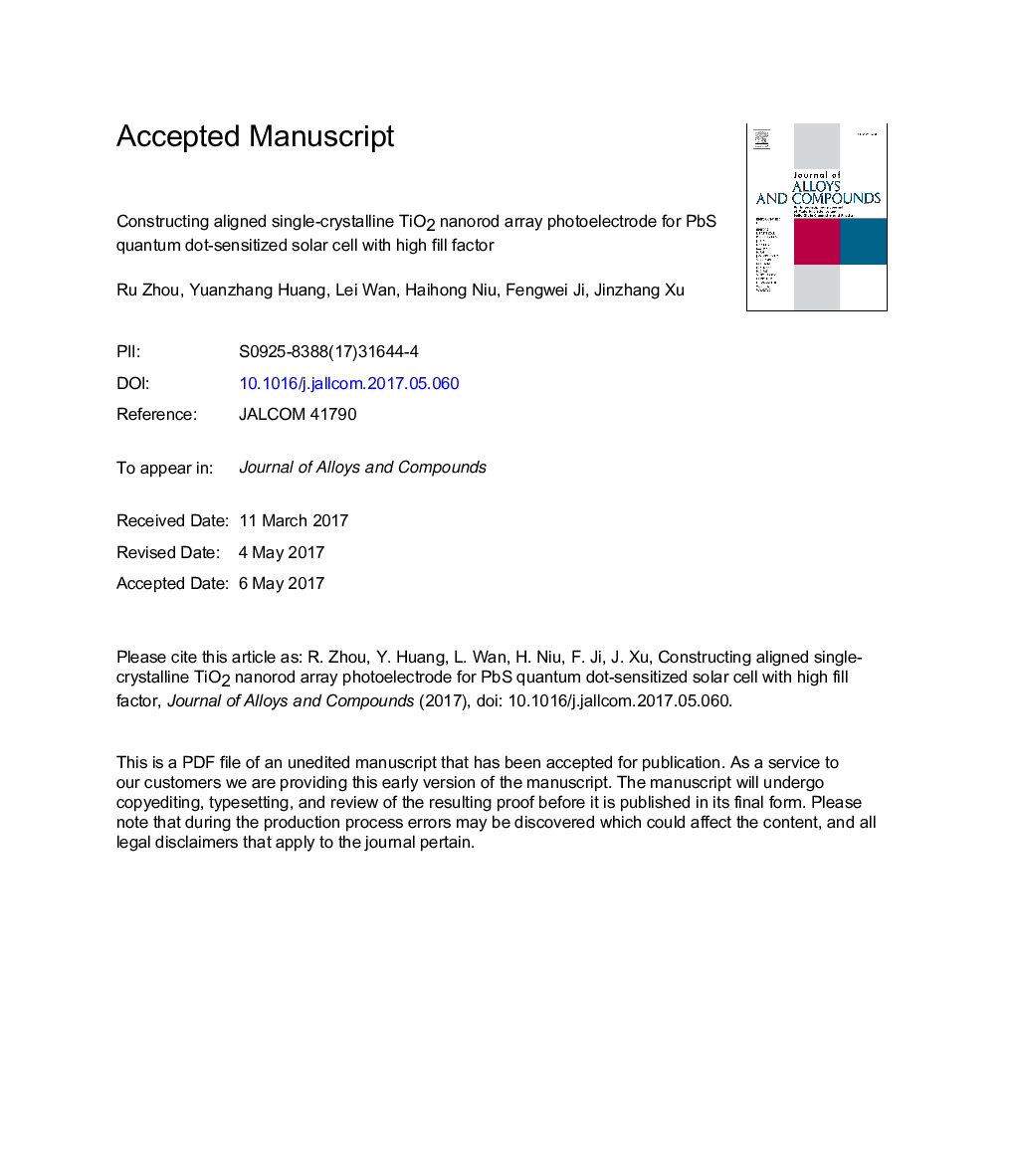| کد مقاله | کد نشریه | سال انتشار | مقاله انگلیسی | نسخه تمام متن |
|---|---|---|---|---|
| 5458894 | 1516178 | 2017 | 36 صفحه PDF | دانلود رایگان |
عنوان انگلیسی مقاله ISI
Constructing aligned single-crystalline TiO2 nanorod array photoelectrode for PbS quantum dot-sensitized solar cell with high fill factor
دانلود مقاله + سفارش ترجمه
دانلود مقاله ISI انگلیسی
رایگان برای ایرانیان
کلمات کلیدی
موضوعات مرتبط
مهندسی و علوم پایه
مهندسی مواد
فلزات و آلیاژها
پیش نمایش صفحه اول مقاله

چکیده انگلیسی
Low bandgap PbS quantum dots (QDs) have attracted special interests serving as promising sensitizers for developing high performance near-infrared responsive photovoltaics. However, the commonly studied successive ionic layer adsorption and reaction (SILAR) processed PbS QD-sensitized solar cells (QDSCs) constructed with mesoporous TiO2 nanoparticle-photoelectrodes generally experience poor fill factor (FF) values lower than 0.50, arising from severe interfacial charge recombination because of the structural disorder of nanoparticles. This work demonstrates the construction of aligned TiO2 nanorod arrays (NRAs), vertically grown on substrates, for SILAR processed PbS QDSCs with high FF. The microscopic, structural, and optical characterizations reveal a rutile phase of single-crystalline structure in nature for TiO2 NRAs. The as-designed solar cell affords the advantages of panchromatic absorption for adequate light harvesting, reasonable band structure for efficient electron injection, and one dimensional (1D) oriented architecture for radial directional charge transport. A solar cell based on a 1.9 μm TiO2 NRA photoelectrode yields a considerable power conversion efficiency of 1.15% under 1 sun, coupled with a significantly enhanced FF of 0.51 in contrast to a conventional TiO2 nanoparticle-based device (FF = 0.38). The high FF is attributed to the outstanding electron transport behavior from QD sensitizers to conducting substrates via a shortest pathway (i.e., through radial direction of NRAs), thereby suppressing charge recombinations in solar devices. Therefore, the architecture of aligned 1D TiO2 NRAs is of great prospect to construct high performance PbS QDSCs. The performance improvement is promisingly expected through fully understanding of the radial directional charge transport mechanism and further optimization of NRA photoelectrodes and QD assemblies.
ناشر
Database: Elsevier - ScienceDirect (ساینس دایرکت)
Journal: Journal of Alloys and Compounds - Volume 716, 5 September 2017, Pages 162-170
Journal: Journal of Alloys and Compounds - Volume 716, 5 September 2017, Pages 162-170
نویسندگان
Ru Zhou, Yuanzhang Huang, Lei Wan, Haihong Niu, Fengwei Ji, Jinzhang Xu,